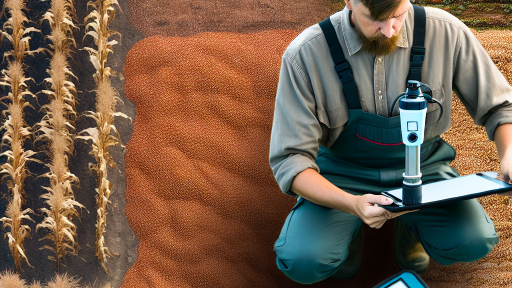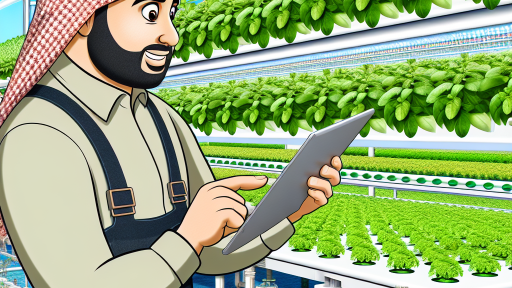Introduction to Predictive Models
Importance in Agriculture
Predictive models play a crucial role in modern agriculture.
They help farmers make informed decisions regarding pest and disease management.
By using data and analytics, these models anticipate potential threats.
This allows for timely interventions, which can minimize crop losses.
Moreover, predictive models enhance resource management practices.
Farmers can allocate their resources more efficiently based on predictions.
This leads to increased productivity and sustainability.
In addition, using predictive models fosters a proactive approach.
Instead of reacting to issues, farmers can anticipate challenges.
This strategic planning can significantly improve yield outputs.
Furthermore, predictive models contribute to environmental protection.
They can minimize the use of pesticides and herbicides.
By optimizing treatment timing, farmers reduce chemical exposure.
This benefits both the environment and public health.
The integration of technology and agriculture is essential.
Transform Your Agribusiness
Unlock your farm's potential with expert advice tailored to your needs. Get actionable steps that drive real results.
Get StartedAs agriculture continues to evolve, predictive models will be vital.
Investing in these tools is investing in the future of food security.
The importance of predictive models cannot be overstated.
They are transformative, empowering farmers to succeed in a changing world.
Types of Predictive Models Used in Pest and Disease Management
Statistical Models
Statistical models analyze historical data to predict pest outbreaks.
These models often use regression techniques for accuracy.
For example, logistic regression helps determine probabilities of occurrence.
Additionally, time-series analysis can identify trends over time.
These approaches allow for informed decision-making in pest control.
Machine Learning Models
Machine learning models enhance predictions through algorithms.
These models learn from data, improving over time without explicit programming.
Support vector machines and neural networks are common choices.
They adapt to changes in environmental conditions and pest behavior.
Consequently, they provide timely recommendations for management practices.
Weather-Based Models
Weather-based models leverage climatic data for pest predictions.
Temperature and humidity play crucial roles in pest lifecycle and spread.
By analyzing these factors, models can predict when pests might emerge.
For example, degree-day models track temperature accumulation for pest development.
Such models enable proactive management strategies for farmers.
Geospatial Models
Geospatial models integrate spatial data to map pest distributions.
They utilize geographic information systems (GIS) for analysis.
These models help identify risk areas for pest infestations.
By combining environmental data, they enhance accuracy in predictions.
Farmers can prioritize resource allocation effectively using these insights.
Showcase Your Farming Business
Publish your professional farming services profile on our blog for a one-time fee of $200 and reach a dedicated audience of farmers and agribusiness owners.
Publish Your ProfileEconometric Models
Econometric models assess the economic impacts of pest management strategies.
They incorporate cost-benefit analysis to evaluate interventions.
This helps stakeholders understand the financial viability of control methods.
Additionally, these models assist in policymaking for sustainable practices.
Ultimately, they promote economically sound pest management solutions.
Data Sources for Developing Predictive Models in Agriculture
Importance of Accurate Data
Accurate data is critical for developing predictive models.
It helps farmers make informed decisions about pest and disease management.
Reliable data sources improve model accuracy and effectiveness.
Types of Data Sources
Multiple data sources contribute to predictive modeling in agriculture.
- Weather data provides information on climate conditions.
- Soil data informs about soil health and characteristics.
- Crop health data tracks the physical condition of crops.
- Pest and disease occurrence records detail past infestations.
Weather Data
Weather data is essential for understanding climatic influences.
Farmers can access historical and real-time weather information.
Sources include meteorological stations and satellite data.
This data helps predict pest migration patterns and disease outbreaks.
Soil Data
Soil data offers insights into nutrient availability and fertility.
Soil tests detail pH levels and organic matter content.
Farmers can utilize this information to optimize crop growth.
Local agricultural extensions often provide soil testing services.
Crop Health Data
Monitoring crop health is vital for early pest and disease detection.
Data can be collected through remote sensing technologies.
Drone technology is increasingly used for aerial assessments.
This technology allows for timely interventions by farmers.
Pest and Disease Records
Pest and disease occurrence records are invaluable historical assets.
They provide data on past outbreaks and their impacts.
Farmers can analyze trends to anticipate future threats.
Regional agricultural agencies typically maintain these records.
Integrating Data Sources
Combining different data sources enhances predictive modeling.
Data integration allows for comprehensive analysis and insights.
Advanced analytics platforms can fuse various data types.
This integrated approach creates robust predictions for management strategies.
Learn More: Soil Health Management in Organic Farming Systems
Machine Learning Techniques Applied to Pest and Disease Prediction
Introduction to Machine Learning in Agriculture
Machine learning significantly enhances pest and disease management in agriculture.
This technology analyzes large datasets effectively, finding patterns and trends.
Farmers and agronomists increasingly rely on these insights for decision-making.
Types of Machine Learning Techniques
Supervised learning models are widely used in pest and disease prediction.
These models learn from historical data to predict future occurrences.
Common techniques include regression analysis and decision trees.
Unsupervised learning can also apply to categorize data without prior labels.
Clustering helps identify unobserved patterns in pest behaviors.
Data Sources for Predictive Models
Data sources play a crucial role in model effectiveness.
Remote sensing technology provides valuable information on crop health.
Showcase Your Farming Business
Publish your professional farming services profile on our blog for a one-time fee of $200 and reach a dedicated audience of farmers and agribusiness owners.
Publish Your ProfileWeather data helps predict environmental conditions favoring pests or diseases.
Additionally, farm management systems offer historical data on pest trends.
Case Studies and Applications
Several organizations have successfully implemented machine learning models.
AgroTech Innovations developed a model predicting aphid outbreaks in crops.
The model uses weather patterns and historical infestation data.
Another example involves CropGuard, which utilizes satellite imagery.
They monitor crop health and predict potential disease outbreaks effectively.
Challenges and Considerations
Despite advancements, challenges persist in machine learning applications.
Data quality and availability remain significant barriers.
Computational resources are also critical for processing large datasets.
Furthermore, farmers may require training to interpret model outputs.
Future Prospects of Machine Learning in Agriculture
The future holds great promise for machine learning in pest and disease management.
Innovations will likely improve predictive accuracy and speed.
Integration with mobile technology may enhance accessibility for farmers.
Collaboration between tech companies and agricultural stakeholders is essential.
Ultimately, these advancements will contribute to sustainable farming practices.
Discover More: Advanced Mulching Methods for Sustainable Agriculture
Case Studies: Successful Implementation of Predictive Models in Farming
Introduction to Predictive Models in Agriculture
Predictive models play a vital role in modern agriculture.
They help farmers forecast pest and disease outbreaks.
These models utilize data from various sources to enhance decision-making.
Consequently, farmers can apply preventive measures proactively.
Case Study: SmartFarm Technologies
SmartFarm Technologies implemented a predictive model in their fields.
Their model analyzed weather patterns and crop data.
As a result, farmers identified potential disease vulnerabilities.
This allowed for timely interventions that reduced losses.
Key Outcomes of SmartFarm’s Implementation
- Reduced crop losses by 30% over two seasons.
- Decreased pesticide use by 25% due to targeted applications.
- Increased overall yield by 15% through effective disease management.
Case Study: Green Harvest Cooperative
Green Harvest Cooperative focused on pest control through predictive analytics.
They used satellite imagery and historical data for their model.
This approach enhanced their ability to predict pest infestations.
Consequently, they could take action before outbreaks occurred.
Achievements of Green Harvest’s Approach
- Achieved a 40% reduction in pest-related damage.
- Improved crop protection efficiency by utilizing precision agriculture techniques.
- Strengthened farmer collaboration through shared data insights.
Case Study: AgriPredict Solutions
AgriPredict Solutions employed machine learning for pest management.
Their system analyzed various environmental variables.
Consequently, it provided farmers with actionable insights.
This predictive capability significantly enhanced crop protection strategies.
Results from AgriPredict’s Machine Learning Approach
- Increased accuracy of pest forecasts by over 50%.
- Enabled farmers to reduce chemical treatments by 35%.
- Enhanced long-term soil health through smarter pest management.
Future Directions in Agricultural Technology
These case studies demonstrate the effectiveness of predictive models in agriculture.
They show how technology can transform pest and disease management.
Farmers are encouraged to adopt these innovative approaches.
Ultimately, this leads to sustainable and productive farming practices.
Delve into the Subject: Cover Crops and Carbon Sequestration Benefits

Challenges and Limitations of Predictive Modeling in Pest Management
Data Quality Issues
Predictive models depend significantly on data quality.
Inaccurate or incomplete data can lead to unreliable predictions.
Showcase Your Farming Business
Publish your professional farming services profile on our blog for a one-time fee of $200 and reach a dedicated audience of farmers and agribusiness owners.
Publish Your ProfileData collection methods vary widely, impacting consistency.
Moreover, outdated data might not reflect current pest dynamics.
Complexity of Biological Systems
Pest behavior and disease spread are inherently complex.
Biological interactions can produce unpredictable outcomes.
Furthermore, environmental factors influence these dynamics.
Such complexity makes modeling challenging and less precise.
Integration of Multiple Factors
Effective pest management requires considering multiple variables.
Models need to incorporate climatic, ecological, and agricultural factors.
Integrating diverse data sources adds to model complexity.
This integration often requires sophisticated algorithms.
Limited User Expertise
The effectiveness of predictive models relies on user expertise.
Lack of training can hinder proper application and interpretation.
Farmers and agronomists may struggle with advanced modeling techniques.
Thus, accessible training is vital for successful implementation.
Adapting to Rapid Changes
Pest populations and disease outbreaks can change quickly.
Models struggle to adapt to unforeseen environmental changes.
This can lead to outdated predictions and poor management decisions.
Rapidly evolving pests and resistance phenomena complicate matters.
Financial Constraints
Developing and implementing predictive models can be costly.
Many farms may lack necessary financial resources.
Thus, prioritizing budget may lead to limited model usage.
Investing in technology can also be a barrier for smaller operations.
Learn More: Water Conservation Practices in Organic Crop Farming
Future Trends: Innovations in Predictive Analytics for Crop Health
The Rise of Artificial Intelligence
Artificial intelligence is revolutionizing predictive analytics in agriculture.
Farmers can now utilize AI to identify crop disease outbreaks early.
This technology analyzes vast amounts of data quickly and efficiently.
Moreover, AI models continuously learn, improving their accuracy over time.
Integration of IoT Devices
The Internet of Things (IoT) enhances data collection for predictive models.
Sensors placed in fields measure soil moisture, temperature, and humidity.
This real-time data helps farmers make informed decisions promptly.
Furthermore, IoT devices enable remote monitoring of crops and soil health.
Use of Drones for Crop Surveillance
Drones play a significant role in modern agriculture.
They provide aerial imagery, making it easier to assess crop health.
This technology detects pests and diseases with high precision.
Additionally, drones help monitor the effectiveness of treatment applications.
Machine Learning for Data Analysis
Machine learning algorithms improve the accuracy of predictive models.
These algorithms analyze historical data to forecast pest outbreaks.
Farmers can then take preventive measures accordingly.
Moreover, machine learning adapts to changing environmental factors.
Collaboration and Data Sharing
Collaboration among farmers enhances predictive analytics efforts.
Showcase Your Farming Business
Publish your professional farming services profile on our blog for a one-time fee of $200 and reach a dedicated audience of farmers and agribusiness owners.
Publish Your ProfileData sharing allows for the creation of comprehensive databases.
This collective knowledge improves the accuracy of predictions.
Additionally, shared insights promote community resilience against pests and diseases.
Future Prospects of Predictive Analytics
The future of predictive analytics looks promising for agriculture.
Emerging technologies will further enhance pest and disease management strategies.
As these innovations progress, farmers will optimize their practices more efficiently.
Ultimately, the goal is to ensure sustainable food production for future generations.
Best Practices for Farmers to Integrate Predictive Models in Their Operations
Understanding Predictive Models
Predictive models help farmers anticipate pest and disease outbreaks.
These models utilize weather data and historical patterns.
Farmers can use them to optimize crop management strategies.
Data Collection and Management
Accurate data collection is vital for effective predictive modeling.
Farmers should gather data on weather, soil conditions, and crop health.
Utilizing technology, such as drones or sensors, can enhance data collection.
Proper data management ensures that predictions remain relevant.
Utilizing Technology
Farmers can leverage software tools for predictive analytics.
Various platforms offer user-friendly interfaces for model integration.
Popular tools include crop monitoring systems and forecasting apps.
Employing these technologies improves decision-making in pest management.
Training and Education
Education is essential for successfully implementing predictive models.
Farmers should attend workshops on data analysis and modeling techniques.
Collaboration with agricultural experts can provide valuable insights.
Investing in training increases the efficacy of predictive applications.
Collaboration with Researchers
Partnering with local universities or agricultural research institutions is beneficial.
These collaborations help farmers access the latest research and technologies.
Joint projects can result in tailored solutions for specific farming needs.
Networking within the agricultural community promotes knowledge sharing.
Continuous Monitoring and Adaptation
Farmers must continuously monitor the effectiveness of predictive models.
Adapting strategies based on real-time data enhances management practices.
Regularly updating models ensures they remain accurate and reliable.
This ongoing process supports sustainable agricultural practices.
Additional Resources
Specialty Crop Multi-State Program Fiscal Year 2023 Description of …
Plant Protection Today: PPQ Develops a Modeling Framework To …




